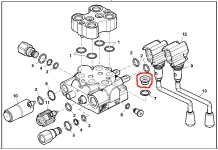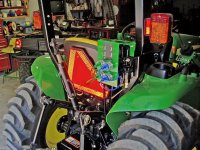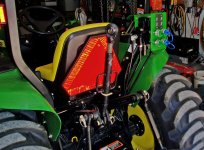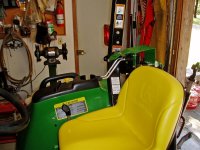radman1
Elite Member
- Joined
- Jul 8, 2006
- Messages
- 3,017
- Location
- midwest
- Tractor
- JD 4520, Toolcat 5610, Bobcat S300, Case-IH 125 Pro, Case-IH 245, IH 1086, IH 806
When it comes right down to it, does it really matter that our hydraulics leak some? Not really in my opinion, when working our tractors we are constantly using-adjusting our loaders, 3pt hitches, top links and side links. So what if they leak down some every few minutes, I know that I am adjusting them continually. And is it that big of a deal to pull on the loader control for a couple of seconds every 10-15 minutes while working with a rear implement? I guess that is one of the reasons that I am not a proponent of the DPOCV's. If your working a box blade, your constantly making adjustments. I do anyway, makes no difference if my hydraulic bleeds off some because I am changing the adjustment anyway.
Just my experience with my conditions with what I do, others will vary.
Depends on the task. Sometimes I am lifting something and I need it held at a specific height to work on a project. Creeping down a few inches in several minutes is aggravating when I am by myself. I believe most leak down is from the valves and not the cylinders. Some of my ag tractors have nearly 0 leak down on heavy implements using a inexpensive farm grade cylinder. A DPOCV is not that expensive, especially at the price a manufacturer would pay for large quanitities. The hydraulic top links on my ag tractors need to be stable. Several thousand pounds of weight on the 3 pt. I cannot have varying depths when cultivating, ditching ect because my top link moved an inch.
I have an 8' manlift I use on my FEL. Tipping down a few inches results in large shifts in manlift. My JD CUT does not hold near as well as my Bobcat Toolcat. My TC can hold 1000 lbs for 4-5 hours and drift down a couple of inches. My CUT would drift several feet in the same time.





